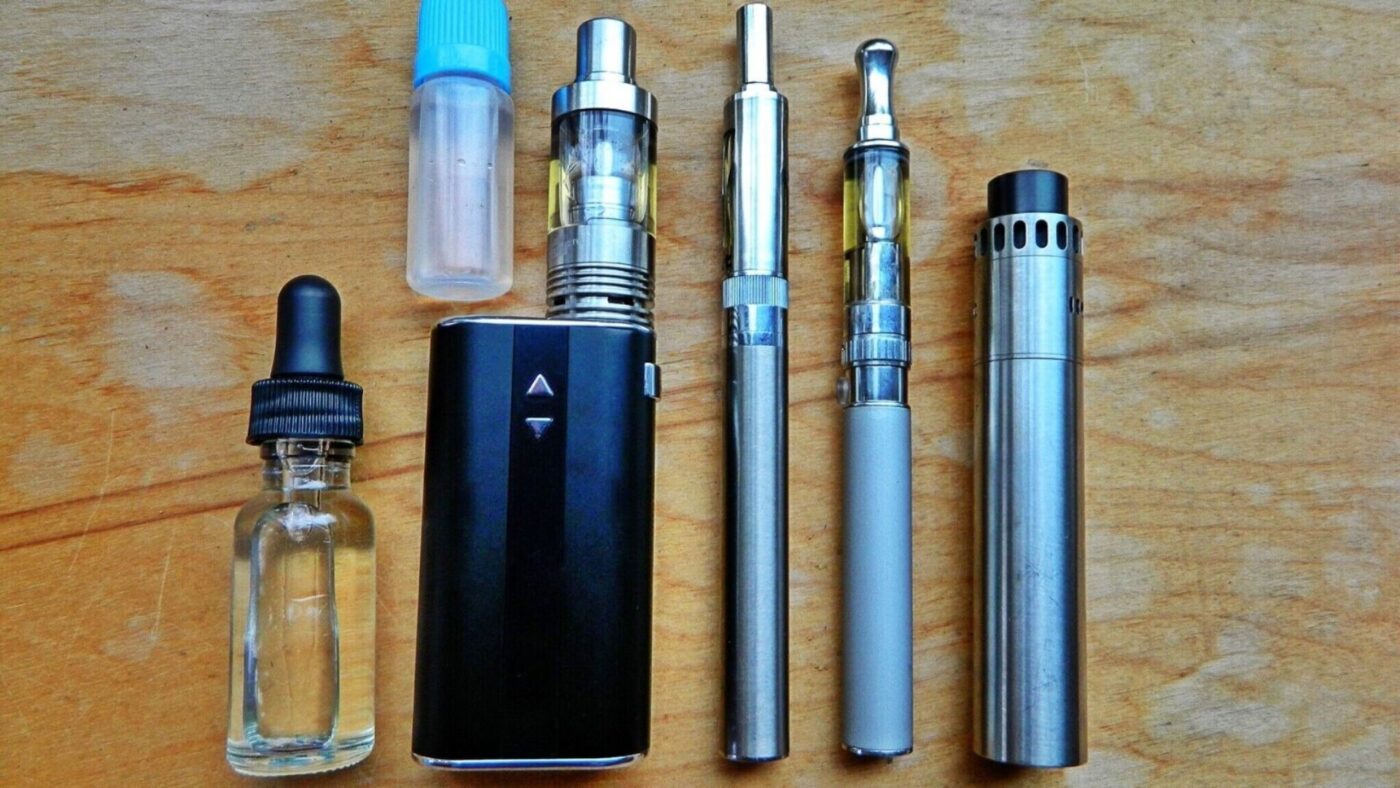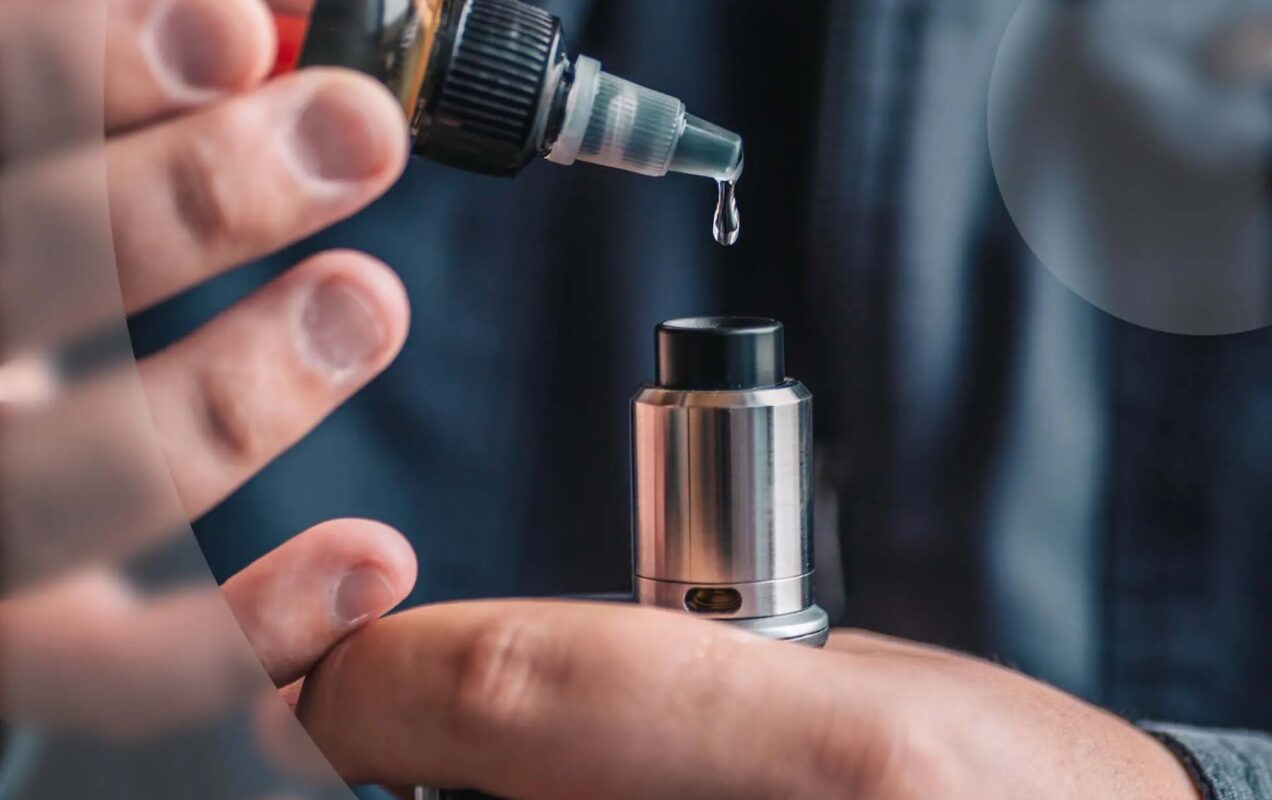The Rise of Vaping: Exploring Safety and Health Implications

Vaping has seen a dramatic increase in popularity in recent years as an alternative to traditional smoking. Originally, vapes were designed to be a healthier substitute, aiming to help users quit smoking altogether. However, despite their perceived lower risk, questions about the safety of vaping remain prevalent. Concerns persist regarding both the long-term health effects and the environmental impact of vaping.
To determine if vaping is a safe option for you, it’s essential to examine a variety of factors and nuances. This article will delve into the safety aspects of different types of vapes, from nicotine-free options to those made from plant-based materials. We’ll also explore the potential health risks associated with vaping and assess whether it’s a safe choice for your lifestyle.
Are Nicotine-Free Vapes Safe?
If you’re a smoker considering a switch to electronic nicotine livraison systems, you might wonder about the effects of quitting smoking and starting to vape. One of the advantages of vaping is the option to choose between nicotine and nicotine-free vape liquids.
Nicotine-free vapes are often promoted as a safer choice compared to their nicotine-filled counterparts, particularly in debates between vaping and smoking cigars. The absence of nicotine removes the risk of addiction, which can be appealing to those who enjoy the sensation of smoking without the threat of dependency. However, there are still safety concerns about the potential risks associated with the aerosol produced by vaping.
Propylene glycol, a common ingredient in many vaping products, is generally considered safe when ingested. Yet, when heated and inhaled, it can cause respiratory irritation. Some users might experience symptoms such as throat irritation, coughing, or allergic reactions.
Similarly, vegetable glycerin is usually deemed safe for consumption, but inhaling it can also lead to respiratory issues. It creates thicker vapor, which might enhance the sensation of smoking but could contribute to respiratory discomfort.
Flavorings used in nicotine-free vape liquids are typically food-grade, but this doesn’t guarantee their safety when inhaled. Certain flavorings, like diacetyl, have been associated with serious lung conditions such as bronchiolitis obliterans (often referred to as “popcorn lung”). Although many manufacturers have removed diacetyl from their products, other flavoring chemicals may still pose risks. Research suggests that these compounds could irritate the respiratory system and potentially lead to long-term health problems. Regular use might result in symptoms like coughing, wheezing, and shortness of breath.
Furthermore, the long-term health effects of inhaling the chemicals in nicotine-free vapes are still under investigation. Researchers are working to understand how these risks compare to those of traditional smoking and nicotine-containing vapes. Comprehensive studies are needed to fully grasp the potential health impacts of long-term use of nicotine-free vapes. Until these studies are completed, it’s challenging to draw definitive conclusions about the overall safety of these products.
In summary, while nicotine-free vapes eliminate the risk of addiction, they are not without potential risks. There is still insufficient evidence to confirm the long-term health impacts of vaping compared to smoking.


Are Disposable Vapes Safe?
Disposable vapes are popular for their convenience and user-friendly design, making them a go-to option for beginners and casual users. These pre-filled devices are used until depleted and then discarded, eliminating the need for refilling or maintenance. However, their safety is a subject of ongoing debate. Like other vaping products, disposable vapes often contain harmful chemicals, and their risks are comparable.
A significant concern is the inconsistent regulation and quality control, particularly in less regulated markets. While some brands adhere to high standards, others may compromise quality, leading to potential issues like leaks, battery malfunctions, and unreliable vapor production. Such defects not only diminish the user experience but can also pose serious safety risks, such as battery explosions.
Environmental impact is another pressing issue. Disposable vapes contribute to electronic waste, raising concerns among environmental advocates. Their single-use nature means that their batteries and plastic components can take centuries to break down, exacerbating waste problems. Although this doesn’t directly impact user safety, it is a critical consideration for the broader environmental consequences associated with disposable vapes.
Are Non-Nicotine Vapes Safe During Pregnancy?
While non-nicotine vapes eliminate nicotine exposure, they are not necessarily safe for pregnant women. Even without nicotine, the chemicals found in vapes can pose risks. Ingredients such as propylene glycol and various flavorings may contribute to respiratory issues and other complications.
The impact of these chemicals on fetal development is not yet fully understood, as research is still ongoing. Some studies indicate that certain substances in vape aerosol could potentially affect fetal development, possibly leading to low birth weight or preterm birth. As a result, it is generally recommended that pregnant women avoid all forms of vaping.
For those seeking to quit smoking during pregnancy, nicotine replacement therapies (NRT) such as patches, gum, and lozenges offer safer alternatives, as they do not involve inhaling potentially harmful substances. Consulting a healthcare professional is strongly advised to determine the most effective and safest method for quitting smoking during pregnancy.
Are Vapes Produced in China Safe?
The safety of vapes made in China can vary significantly depending on several factors, including regulatory oversight and quality control. Different countries have different levels of regulation, which can greatly impact the safety and reliability of vaping products.
China is a major hub for vape manufacturing, supplying a large share of the global market. Many reputable brands produce their vapes in China, adhering to strict quality control standards and international regulations. These manufacturers often undergo regular inspections to ensure their products are safe and reliable.
Despite this, there is also a substantial number of unregulated and counterfeit products on the market. These lower-cost, unregulated vapes may not meet safety standards and can present significant risks due to poor-quality materials and inconsistent manufacturing practices.
The quality of e-liquids from Chinese manufacturers can also be inconsistent. Established brands usually perform comprehensive testing to ensure their e-liquids are free from harmful contaminants. Conversely, unregulated e-liquids may contain dangerous substances like heavy metals and toxic chemicals.
To mitigate health risks, it’s crucial to purchase vapes from well-known, trusted brands and reputable retailers to ensure you are getting safe, high-quality products.
Are Plant-Based Vapes a Safe Choice?
Plant-based vapes cater to those who lean towards natural and holistic wellness approaches. These vapes, which utilize plant extracts like hemp or herbs, offer an alternative to synthetic e-liquids for those seeking natural remedies.
Marketed as a safer and more natural option compared to conventional vapes, the safety of plant-based vapes hinges on the types of plant extracts used and any additional chemicals present. Ensuring high-quality production standards is crucial, as plant-based vapes should be free from harmful additives, pesticides, heavy metals, and solvents.
However, it’s important to be aware that some plant extracts might trigger allergic reactions or other side effects. Always review the ingredient list before using any plant-based vape juice.
Furthermore, the vaporization process can produce harmful byproducts. For instance, vaporizing certain herbs might release tar and carbon monoxide, posing similar risks to those associated with smoking.
Interactions with medications are another consideration. For example, CBD can affect various medications, making it essential to consult with a healthcare professional before using plant-based vapes if you’re on prescription drugs.
Proper storage is also key to maintaining the safety and efficacy of plant-based vaping products. Store devices and e-liquids away from direct sunlight and heat to preserve their quality.
In summary, while plant-based vapes might present some health advantages over smoking or traditional nicotine-free vaping, they are not without risks. As with any vaping product, understanding the ingredients and opting for well-reviewed brands that offer transparent product information is vital.
Are There Safe Vapes?
The idea of a completely safe vape remains uncertain. While some vaping products are less harmful than others, no vape is entirely free of risk. The goal, therefore, is to minimize health risks as much as possible. Although vaping may be less harmful than smoking cigarettes, it still carries potential health concerns. For individuals struggling with nicotine addiction who cannot or do not wish to quit, transitioning to vaping may lower their exposure to harmful substances, but it does not eliminate risks altogether.
When choosing to vape, opting for high-quality, regulated products like the OVNS 2500 Disposable Vape is advisable. Reducing risks associated with vaping involves selecting products that meet stringent manufacturing standards and are free from harmful additives and contaminants. Opt for reputable brands that adhere to regulatory guidelines and offer transparent ingredient lists, including clear information about nicotine content.


Nicotine-free vapes are often marketed as a safer alternative for those who want to quit smoking but still crave a similar experience. These products can help mitigate some risks associated with vaping, but they are not entirely risk-free.
To ensure the safest vaping experience, stay informed about the latest research and recommendations from health authorities. The vaping landscape is continually evolving, and staying updated can help you make better-informed choices.
Currently, nicotine-free vape juice is considered one of the safer options on the market. Its lack of nicotine makes it appealing for those transitioning from tobacco cigarettes. However, even without nicotine, these products may still present potential risks similar to other vaping products.
Health Risks Associated with Nicotine Vaping
Nicotine, a powerful stimulant, significantly impacts the brain’s reward system. When inhaled, nicotine swiftly enters the bloodstream and reaches the brain in mere seconds. This triggers a rapid surge of dopamine, creating a pleasurable feeling that reinforces the behavior and leads to addiction.
Vaping nicotine poses several health risks. Nicotine’s addictive nature can lead to dependency, affecting the cardiovascular system by raising heart rate and blood pressure. This increased souche on the heart can elevate the risk of heart disease. Nicotine triggers adrenaline release, further elevating heart rate and blood pressure, which can be particularly detrimental to those with pre-existing heart conditions. Prolonged exposure can contribute to cardiovascular issues such as hypertension, coronary artery disease, and heart attacks.
Research indicates that long-term nicotine use can result in artery hardening and narrowing, raising the risk of stroke. Nicotine also causes vasoconstriction, reducing blood flow and oxygen delivery to essential organs. This can lead to peripheral artery disease (PAD), marked by reduced blood flow to the limbs, which can cause pain and increase susceptibility to infections and ulcers.
Vaping nicotine can also worsen respiratory problems. The inhalation of vape fluids containing nicotine and other harmful chemicals can lead to inflammation and damage to the respiratory system, manifesting as coughing, wheezing, and shortness of breath. Chronic use may result in conditions like chronic bronchitis and other lung diseases. Individuals with pre-existing respiratory conditions, such as asthma, may experience exacerbated symptoms from vaping.
A major concern with nicotine vaping is addiction. Once hooked, quitting can be challenging, leading to extended exposure to the harmful effects of nicotine and other chemicals in vape products. This addiction can also increase the likelihood of transitioning to or reverting to traditional cigarette smoking, which carries even more severe health risks. The potential for vaping to act as a gateway to smoking is particularly troubling for adolescents who might encounter nicotine for the first time through electronic cigarettes.
Furthermore, nicotine addiction through vaping can have significant mental health implications. The persistent craving for nicotine can lead to anxiety, irritability, and mood swings. Compulsive vaping behavior, often involving more frequent and higher doses of nicotine than intended, exacerbates exposure to harmful chemicals and associated health risks.
Potential Side Effects of Vaping
Vaping can lead to a variety of side effects, which can range from temporary discomfort to potential long-term health issues. Common short-term effects include coughing, wheezing, and shortness of breath due to irritation from inhaling vapor. The chemicals in vape products may also cause dryness and irritation in the mouth and throat. Some individuals may experience nausea, especially with high nicotine levels or certain flavorings. Nicotine’s stimulating effects can lead to dizziness and lightheadedness, particularly in new or sensitive users.
For those with allergies to ingredients in vape liquids, such as propylene glycol or specific flavorings, allergic reactions can occur. Symptoms may range from mild irritation to severe issues like swelling, difficulty breathing, or even anaphylaxis.
The long-term effects of vaping are still under investigation, but emerging evidence suggests potential chronic health concerns. Regular vaping may contribute to respiratory conditions such as chronic bronchitis and other lung diseases, with symptoms like persistent cough, mucus production, and breathing difficulties. Chronic exposure to harmful chemicals in vape liquids can damage lung tissue and may lead to conditions like chronic obstructive pulmonary disease (COPD). Additionally, vaping might impact cardiovascular health, potentially affecting heart rate, blood pressure, and blood vessels, which could lead to hypertension, coronary artery disease, or heart attacks.
Some vape liquids contain diacetyl, a flavoring linked to a severe lung condition called popcorn lung, characterized by airway scarring and narrowing, leading to significant breathing problems and permanent lung damage.
Although these side effects represent potential risks, it’s important to remember that individual experiences may vary. While these effects might sound severe, they generally require substantial exposure to manifest. Compared to smoking cigarettes, vaping is considered a less harmful alternative, but awareness of these potential risks remains important.
Commonly Asked Questions
What Are the Potential Risks of Vaping?
Vaping carries several risks, such as nicotine addiction, exposure to toxic chemicals, respiratory problems, and possible long-term health consequences. These risks can differ based on the type of vape and the substances being inhaled.
Is There a Vape That’s Considered Safe?
No vape product can be deemed entirely safe. While some may pose fewer risks compared to traditional cigarettes, they still come with health hazards. The healthiest choice is to avoid vaping entirely. For those who do choose to vape, opting for high-quality products and being cautious about their ingredients can help minimize risks.
Is It Harmful to Vape Without Nicotine?
Vaping without nicotine removes the risk of nicotine addiction, but it doesn’t eliminate potential harm. Non-nicotine vapes still contain chemicals that can negatively impact respiratory health. The long-term effects of using non-nicotine vapes are not fully known, so caution is advised.
Can Vaping Without Nicotine Affect Dental Health?
Yes, even nicotine-free vaping can affect your dental health. The vapor can cause dry mouth, which decreases saliva production and may lead to tooth decay and gum issues.
Are Vape Liquids from China Safe?
The safety of vape liquids from China can be inconsistent, depending on the brand and manufacturer. To ensure safety, choose products from reputable brands and retailers, and look for certifications and reviews.
What Is the Most Reliable Vape Brand?
There isn’t a single “safest” vape brand, as safety can vary between brands. Generally, brands that maintain high quality standards, provide clear ingredient information, and adhere to regulatory guidelines are considered safer.
Summary
Vaping is a nuanced issue with many factors influencing its safety. While some vapes might be less harmful than others, none are without risk. Nicotine-free and plant-based vapes present less risk compared to tobacco smoking but still carry potential health concerns. Understanding these risks and making informed choices can help minimize exposure to harmful substances.
If you’re new to vaping or a seasoned user, ensure you select products from reputable brands known for their quality and safety standards. Brands with a strong reputation and transparency, such as Snoop Dogg’s Death Row 50mg Disposable Vape, may offer added assurance of quality.
For further guidance on health and wellness related to vaping, consulting with medical professionals can provide evidence-based advice and help you navigate the complexities of vaping and its health impacts. Don’t hesitate to seek expert opinions for informed decisions.


